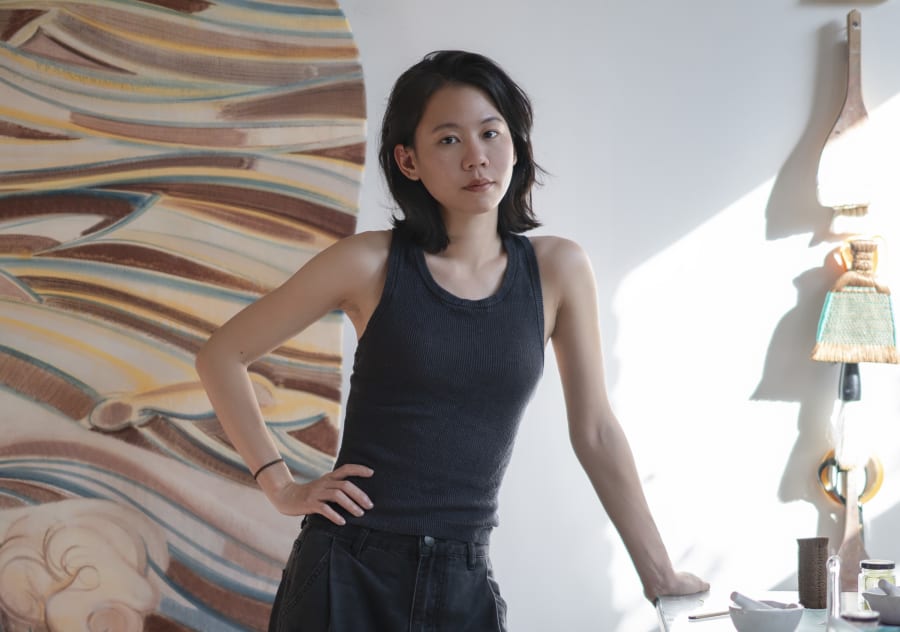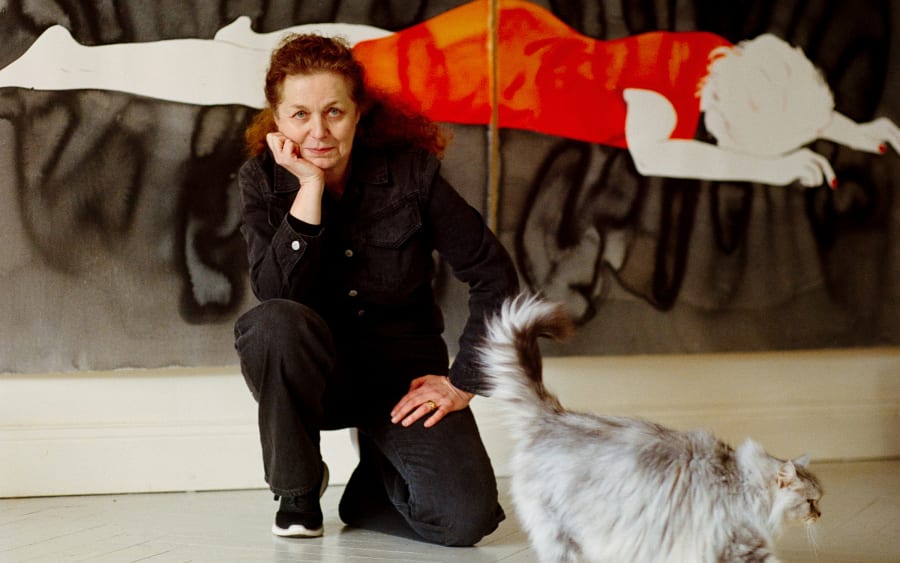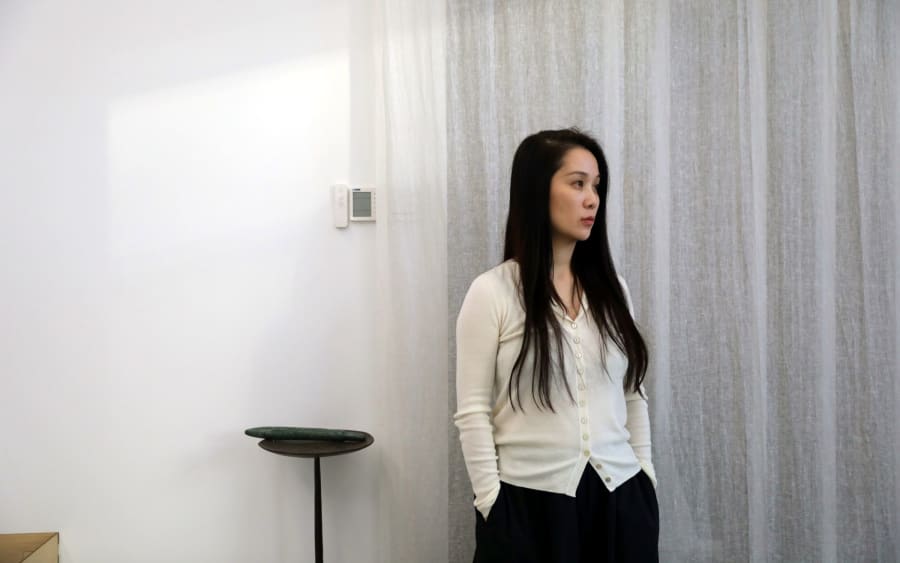‘When I was growing up, my parents encouraged a peripatetic lifestyle in which I had to adapt to new cultures. I was always fascinated by the art of seeing. I went to a specialized arts middle school in New York, where I had an incredible teacher who really fostered my creativity. I then moved to Benin in West Africa, and the boarding school I went to was less about encouraging the growth of young artists. A few years later, I settled in Kampala, the capital of Uganda, where my neighbor was a photojournalist. I remember ringing his doorbell, introducing myself, and saying, “I’d like to learn analog photography.” We began weekly lessons, and eventually I got my own camera.
‘In high school I spent some of my summers in New York. There, I spent a lot of time around mentor figures who were wonderful teachers, such as the artist Nsenga Knight and Bradford Young, who is a great cinematographer. They really influenced my interest in the documentation of Black and diasporic life. One day I remember picking up a book and seeing Yinka Shonibare’s Scramble for Africa [2003]. I was an African history major studying for the IB (International Baccalaureate) and I thought, “This is incredible.” This contemporary take on history was very appealing to me.
‘I briefly went to school to study cinematography at the Academy of Art University in San Francisco. I was especially interested in visualization and narrative. Someone once told me, “In African culture, you’re born as a griot, a storyteller.” I think that was always innate in me – that I wanted to tell a story, but I wasn’t sure in what form.
‘I ended up going to New York where I had a couple jobs in fashion, working with creatives such as Maryam Nassir Zadeh and Susan Cianciolo, who really influenced my artistic language. For Maryam, I would travel and find interesting things. With her it was like working in a mini museum of fashion and objects. She and I had a language of color and really connected on objects and textiles.
‘I wanted to move to Los Angeles and create something similar. When I did so, around 2015, I found myself with a lot of free time, and for whatever reason, I felt alienated. I started making works on paper to connect with some sort of nostalgia. At the core of everything I’ve done is a Portuguese word, saudade. In Mozambique, where I’m from, we speak Portuguese, and saudade means “unknowable longing.” It’s a very contemplative, ambiguous word. I started to make absurd watercolors about the size of my palm, and my friend suggested that we exhibit them in her living room. At the time you could still do that kind of thing in LA. It was fun and easy. I then did another show in a South Los Angeles bookshop called OOF Books. All the people who bought the paintings were artists.
‘I remember Thomas Houseago, who I really look up to, and who I now share a gallery with [Xavier Hufkens, in Brussels], said to me, “Cassi, you need to make these bigger.” It felt like that would be a huge commitment, but one day I just decided to go for it. I switched the scale and the medium from watercolor to acrylic. I got this funky studio on Jefferson Boulevard. François Ghebaly visited me there, and I had my first LA solo exhibition, “The Day a Monkey is Destined to Die All Trees Become Slippery”, at his gallery in 2019.
‘I think about my art career in terms of the studios I’ve had. In Los Angeles, I had my Jefferson Boulevard space for almost four years. Then I moved to East Hampton, and I had a garage/office space that I painted white, and that was my studio for almost five years. I lived close to the beach, and I could swim and work until 5 a.m. in the morning if I wanted. There was a sense of ultimate freedom. Then I bought an almost 200-year-old house in the Berkshires in New England and found a studio with a freight elevator, a nice wood floor, and big lofty windows. I thought it couldn’t get any better than that.
‘For a while I was traveling between Manhattan, where my apartment was, and the Berkshires, and I also had my studio in East Hampton. I loved it because there were different landscapes. I had the mountains, the ocean, and the stimulus of the city, but it became quite tiring because I was always driving and on ferries. One day I thought, “What if you could just simplify? If you took away the hours of driving, as well as the overheads and responsibility of maintaining spaces, then what are you left with?” You’re left with time, which will always be the ultimate currency. At that point I was 34. It wasn’t something fatal in my career that made me feel this way. It was just me maturing as a human being, and this was something I wanted for my practice and my life.
‘Then I became pregnant, and the only thing that made sense to me was to pursue a more Mediterranean life. My partner is from Italy, and I told myself: Once I find a studio, I’ll move. I found one in Biella in northwestern Italy in September 2023, but I’d say I wasn’t fully settled there until January 2024. I’m in the foothills of the Alps, around two hours from the South of France. The only well-known artist there is [Michelangelo] Pistoletto, who is my neighbor. We call him “Maestro.” He walks around town with a nice suit and a pipe. Things have definitely simplified for me in this small town. There’s just much more time to relish.
‘My studio here is across two floors with vaulted ceilings and cement columns. I instantly think about Cy Twombly’s space – something very romantic and beautiful. The second floor has classic bright lighting, but the first floor where I paint is darker. When I arrived, it had this warm, amber light, which I never changed and enjoyed adjusting to. It makes me think about a time when I painted by candlelight. I don’t know if I’ll stay here forever, or if I’ll find something even better, or if I’ll downsize. Maybe the next place is Morocco. Or maybe it’s Naples. I’m not sure yet, but this is good for now.
‘The freedom in my life is what I enjoy and want to preserve. That for me is the golden rule: doing what you feel is inherent to you as an artist, whether it makes you successful or not. It’s also about being curious. I have a ten-month-old daughter now, and she reminds me to be curious and to have fun and play. Questioning and learning should never stop.’
Cassi Namoda is represented by Xavier Hufkens (Brussels), Goodman Gallery (Johannesburg, Cape Town, London), and 303 Gallery (New York).
Sharjah Biennial runs from Febuary 6 to June 15, 2025 in Sharjah, UAE.
Stephanie Sporn is a New York-based author, specialized in the intersection between art and fashion.
Top image: Cassi Namoda in her studio in Biella, Italy. Photography by Julius Hirtzberger for Art Basel.


